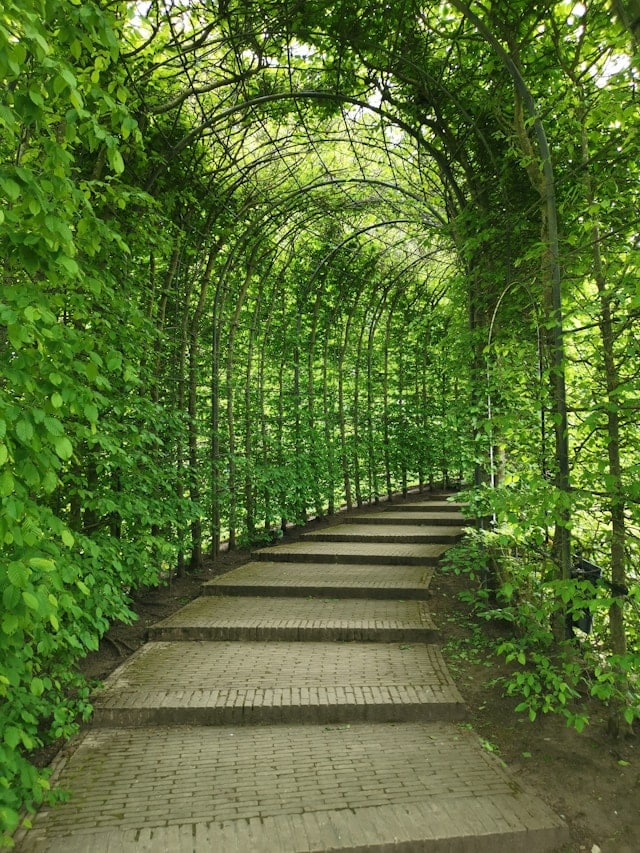How to Design a Drought-Resistant Landscape for a UK Garden?

In the face of unpredictable weather patterns and the increasing occurrence of drought, your garden may need a fresh approach. If you’re seeking ways to maintain a lush, resilient garden, despite the lack of water, you’re not alone. Many homeowners are turning to drought-resistant gardening, a method that emphasizes the selection of plants and design elements to create a garden that can withstand dry conditions. In the following sections, we will explore different aspects of creating a drought-resistant landscape, including plant selection, soil management, water-saving design strategies, and innovative gardening methods.
Choosing the Right Plants for a Drought-Resistant Garden
When embarking on a drought-resistant landscaping project, your first consideration should be the selection of appropriate plants. Drought-tolerant plants have developed strategies to survive in dry conditions, such as deep-root systems to tap into groundwater, waxy leaves to reduce water loss, and slow growth rates to conserve resources.
A voir aussi : What Are the Best Plants for a Low-Light Bathroom to Enhance Air Quality?
In the UK, examples of drought-tolerant plants include sedums, lavender, euphorbia, and ornamental grasses like Miscanthus or Pennisetum. These plants can withstand periods of low rainfall and provide visual interest in a garden.
Remember, it’s not just about selecting the right plant. Correct planting is equally important. It is crucial to plant at the right depth and spacing to allow for root expansion and to avoid competition for water.
Dans le meme genre : How to Choose the Perfect Acoustic Panels for a Peaceful Home Office?
Managing Soil for a Drought-Resistant Landscape
The second key step in designing a drought-resistant landscape is to understand and manage the soil in your garden. Soil plays a significant role in water retention and drainage. It directly affects the ability of plants to absorb water and nutrients.
Ideally, a drought-resistant landscape should have soil that retains water well but also allows excess water to drain quickly to prevent waterlogging. This can be achieved by incorporating organic matter like compost or manure, which improves soil structure and enhances water-holding capacity.
Mulching is another good practice to conserve soil moisture. Mulch, such as straw, compost, or gravel, helps to reduce evaporation, suppress weeds, and regulate soil temperature. It also adds organic matter to the soil as it decomposes, further improving soil health.
Designing Water-Saving Strategies in the Landscape
As important as plant and soil selection are, your landscape design can also play a significant role in reducing water usage. Consider designing your outdoors in a way that maximizes water conservation while maintaining aesthetic appeal.
For instance, creating garden zones based on the water needs of plants can be a practical strategy. High water-use plants can be grouped together in an area that is easy to irrigate, while plants with low water requirements can be placed in the more challenging areas of your yard.
The use of hardscape elements like paving, gravel, or stone can also reduce the amount of area that needs watering. These materials can create interesting textures and contrasts in your garden while helping to conserve water.
Exploring Innovative Gardening Practices
In addition to traditional gardening practices, there are innovative methods that can further enhance the drought-resistance of your landscape.
One such method is xeriscaping, a landscaping philosophy that uses native, drought-tolerant plants and minimizes water use. This method often includes the use of gravel or rocks to cover the soil and reduce evaporation.
Another method is rainwater harvesting. Collecting rainwater during periods of rainfall and storing it for use during dry periods can significantly reduce your reliance on tap water for irrigation. This can be as simple as installing a rain barrel at the end of a downspout, or as complex as designing a rain garden to slow runoff and allow water to infiltrate into the ground.
In conclusion, designing a drought-resistant landscape may require some initial investment of time and resources. However, the benefits in terms of water conservation, reduced maintenance, and a garden that remains vibrant despite dry conditions, make it a worthwhile endeavor.
Incorporating Drought Tolerant Plants and Design Elements
In order to maximize your garden’s tolerance to drought, it’s essential to incorporate elements that naturally thrive under dry conditions. Beth Chatto, a noted British plantswoman, famously designed a gravel garden that remains unirrigated, relying solely on rainfall and the natural resilience of the plants used. This concept can serve as an inspiration for your own drought-tolerant garden.
Start by selecting drought-tolerant plants that are well adapted to your local conditions. For instance, Mediterranean plants like rosemary, sage, and thyme are known for their ability to withstand dry conditions. Their aromatic leaves have a dual purpose; they add scent to your garden, and their oils deter pests.
Native plants are another great option. These plants have evolved over centuries to survive in the specific conditions of your region, making them naturally drought-tolerant. In the UK, examples of these include Sea Thrift, English Lavender, and Wood Sage. Planting native species also supports local wildlife, promoting biodiversity.
When it comes to garden design, there are ways to visually enhance your garden while improving its drought resistance. A gravel garden, like that of Beth Chatto, can be an effective solution. Gravel reduces water loss from the soil while providing an attractive, low-maintenance surface. Dry stone walls or rockeries can not only provide a home for rock-dwelling plants but also create a beautiful feature that requires no watering.
Utilizing Organic Matter and Innovative Water Management
Soil health is vital in a drought-resistant garden. Good quality soil retains water better, reducing the need for watering. Incorporating organic matter into your soil can significantly improve its structure and water retention capabilities. Organic matter, such as compost, rotted manure, or leaf mold, helps to improve the soil’s ability to hold onto water and slowly release it to plants.
Another way to conserve water is by implementing water-saving strategies. Rainwater harvesting allows you to stockpile water during wet periods to use during droughts. Collecting rainwater is simple with the help of rain barrels, and more complex systems involving pumps and irrigation can be considered based on your needs.
If you’re renovating your entire landscape, you might want to consider planning your garden around a rain garden concept. Rain gardens are designed to capture runoff and allow it to infiltrate back into the ground, recharging groundwater storage while providing a lush, moist area for water-loving plants.
Conclusion
Designing a drought-resistant garden can seem like a daunting task, but the benefits far outweigh the challenges. By carefully selecting drought-tolerant plants, improving soil health with organic matter, implementing water-saving strategies, and using innovative design ideas, you can create a garden that not only survives but thrives in dry conditions. It won’t just be a boon for water conservation but will also transform your outdoor space into a vibrant, low-maintenance haven you can enjoy all year round. Remember, the key is to work with nature, not against it. Embrace the conditions you have and create a garden that celebrates the beauty of resilience.
